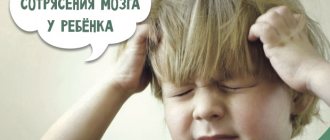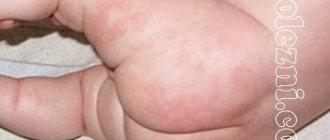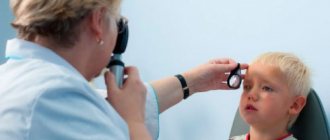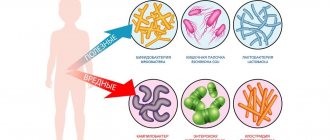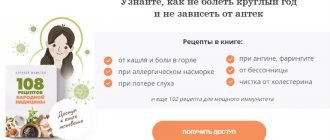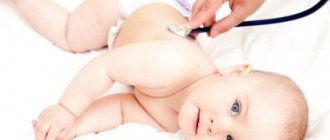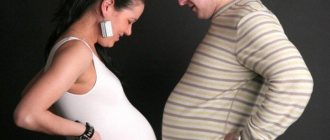What is childhood pancreatitis?
Pancreatitis is an inflammatory-dystrophic lesion of the pancreas. A distinctive feature of the disease in childhood is its mild symptoms, which resemble other diseases of the digestive tract. Pathology develops against the background of the active influence of pancreatic enzymes (a kind of self-destruction of the organ occurs).
Provoking factors include dietary errors, some chronic diseases of the digestive tract and the consequences of infectious processes.
At what age can the disease appear?
Symptoms of pancreatitis can appear in children from a very early age, but preschoolers and schoolchildren are at particular risk. This factor is associated with the diversity of diet and errors in it.
Symptoms
Symptoms of chronic pancreatitis depend on the duration, form and stage of the disease, the degree of failure of the functionality of the pancreas and other organs of the gastrointestinal tract. In the chronic course of the pathology, there may be periodic or constant aching pain in the epigastric area, which is aggravated by errors in nutrition, after emotional stress or physical activity. Painful attacks can last from several hours to several days.
May be observed:
- decreased appetite;
- nausea, vomiting;
- heartburn;
- weight loss;
- constipation that alternates with diarrhea;
- asthenovegetative syndrome.
In children with chronic pancreatitis, damage occurs that goes away over time, as with acute pancreatitis. In some children, inflammation continues and contributes to the appearance of permanent disturbances in the structure and activity of the pancreas.
The pain is diffuse throughout the abdomen, sometimes concentrated in the epigastric region. As in adults, girdle pain is not observed in children. The pain is severe, the child is capricious, cries, and takes a forced position. Symptoms appear suddenly or after eating harmful foods.
The following symptoms of intoxication are also characteristic:
- weakness;
- temperature rise to 38 C;
- dizziness;
- disturbances of consciousness.
In the acute period, the temperature reaches 39-40 C. This happens when infectious complications occur. The patient is disoriented, pale skin, severe sweating, and sometimes delirium and hallucinations appear.
The acute form of pancreatitis is characterized by severe inflammation that lasts a short period of time. In severe cases, this form leads to bleeding in the organ, tissue damage, infection and the appearance of cysts.
Classification
Childhood pancreatitis can manifest itself in acute or chronic form (each type has its own characteristics of symptoms and differs in the degree of damage to the digestive tract). Based on the nature of changes in the tissues of the gland, purulent, acute edematous, hemorrhagic and fatty pancreatic necrosis are distinguished. This classification is carried out taking into account the complications of the disease. Depending on the speed of development, DP can be latent or recurrent.
Classification according to origin:
- hereditary type (autosomal domain transmission);
- secondary form (against the background of inflammatory processes in other organs);
- primary type (manifests as an attack of acute pancreatitis).
Causes
In some cases, the causes of DP remain unclear. Among the common factors that provoke the disease are hereditary predisposition, abnormalities in the development of the digestive system, the consequences of allergic reactions or infectious lesions of the gastrointestinal tract.
A prerequisite for the occurrence of pancreatitis is a disruption in the process of the pancreas producing its own enzymes (splitting and digesting its own tissues). This pathology can be provoked by many internal and external factors.
Causes of DP:
- violation of the outflow of pancreatic secretions;
- consequences of helminthiasis;
- malignant pathological processes;
- complications of bacterial or viral infections;
- blunt abdominal trauma;
- lactase deficiency;
- developmental anomalies of the pancreatic ducts;
- critical disturbances in metabolic processes;
- complications of cholelithiasis or cholecystitis;
- bacterial damage to the digestive tract;
- pathologies of the bile ducts;
- eating disorders;
- some endocrine diseases;
- violation of diet during the recovery process;
- consequences of severe toxic-allergic reactions.
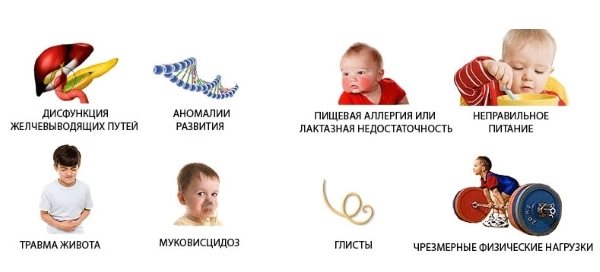
Reactive pancreatitis
Reactive pancreatitis is a reaction of the child’s pancreas to some irritants; it is not a separate disease.
Symptoms of reactive pancreatopathy may occur in a child who has recently suffered:
- ARVI
- other inflammatory diseases
- poisoning with poor quality food products,
- it may also be a reaction to a food allergy.
With reactive pancreatitis, spasm of the pancreatic ducts and swelling of the organ itself occurs.
In children under one year of age, the occurrence of reactive pancreatopathy is associated with:
- improper introduction of complementary foods;
- introduction of grape juice;
- introduction of meat products;
- introduction of seasonings before the prescribed age.
These products not only increase gas formation in the intestines, but also disrupt the functioning of the still immature pancreas.
The most common symptoms of reactive pancreatitis are:
- sharp girdling pain above the navel, which decreases in a sitting position with the torso bent forward;
- severe nausea;
- vomiting of gastric contents;
- temperature rise to 37°C, especially in the first few hours from the onset of the disease;
- stool liquefaction;
- dry mouth;
- white coating on the tongue;
- moodiness;
- irritability;
- refusal of games.
If the above symptoms appear, and especially persistent abdominal pain, you should immediately contact a pediatrician, gastroenterologist, or call an ambulance.
In addition to providing first aid, the doctor will prescribe the necessary examinations (ultrasound of the abdominal organs, tests). Based on the examination results, drug treatment is prescribed.
Forms of pancreatitis
Pediatric pancreatitis can be acute, chronic or reactive in nature. Each form of the disease has its own characteristics of manifestation. The extent of damage to the pancreas varies. Different types of pancreatitis require different treatment regimens.
Only a specialist can determine the specific form of the inflammatory process based on a comprehensive examination of the child.
Spicy
Acute pancreatitis in children is characterized by swelling of the pancreas tissue. Complications of this pathology can manifest themselves in the form of necrosis and hemorrhage. The risk group includes children 10-13 years old. The main causes of the disease in this age category of patients are the consequences of food allergies and poor nutrition. Symptoms of pancreatitis manifest themselves in a pronounced form (sudden attacks).
Chronic
Chronic pancreatitis develops against the background of fibrosis, sclerosis or pancreatic parenchyma. The functions of the organ in this disease are gradually impaired. For the development of the inflammatory process, the presence of degenerative changes in the digestive system is necessary. Chronic DP can be primary or secondary. According to the course, the disease is divided into latent and recurrent forms. In the first case, the symptoms are mild, but regular. In the second, periods of exacerbation are replaced by remissions of varying durations.
Classification by severity:
- light form;
- moderate form;
- severe form.
Reactive pancreatitis in children
Reactive DP is a response of the pancreas to inflammatory processes in other digestive organs. This pathology becomes true pancreatitis only in the absence of adequate and timely therapy. Children aged 10-14 years are at risk.
The most common provoking factor of the disease is an infectious lesion of the digestive tract.
Diagnosis of pancreatitis
If symptoms appear that may indicate the presence of pancreatitis, you should consult a pediatrician and gastroenterologist. After the examination, the doctor makes a decision on prescribing the necessary diagnostic methods. To diagnose pancreatitis, the following may be prescribed: a general blood test, thanks to which it is possible to identify the inflammatory process in the body.
In this case, an increased number of leukocytes is noted. Then a biochemical blood test is performed, through which an increased level of enzymes in the blood is detected, indicating the occurrence of acute, chronic or reactive pancreatitis.
The presence of the disease is indicated by excess amounts of trypsin, lipase and amylase. And finally, a stool test is taken from the child for a coprogram, thanks to which it is possible to identify insufficiently digested food particles. This indicates that the pancreas is not producing enough enzymes.
If necessary, the doctor also conducts an ultrasound examination of the abdominal organs, as a result of which the presence of abnormalities in their functioning, structure, size is detected, and prescribes a urine test for the presence of amylase.
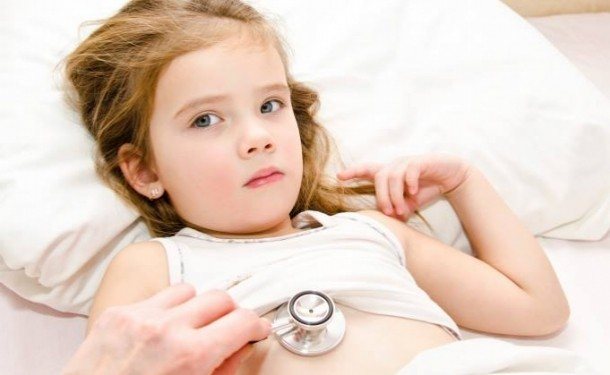
Symptoms and signs of pancreatitis
In most cases, childhood pancreatitis develops in a mild form. Purulent-inflammatory processes are isolated episodes in medical practice. The symptoms of acute and chronic diseases are different. In the first case, attacks occur suddenly and are accompanied by severe pain. In the second, the manifestations of pancreatitis are less pronounced, but are regular.
Symptoms of acute DP:
- increased body temperature;
- girdling pain;
- paroxysmal pain in the epigastric zone;
- signs of flatulence;
- pain in the left hypochondrium;
- repeated vomiting;
- loss of appetite;
- burping or heartburn;
- pallor or marbling of the skin;
- dry mouth;
- increasing signs of intoxication.
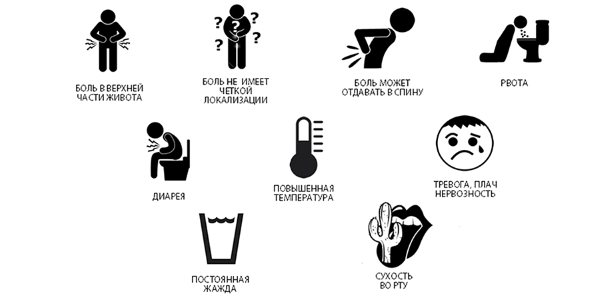
The symptoms of chronic DP depend on the degree of damage to the pancreas. Painful sensations are regular. An exacerbation occurs after eating unhealthy foods (spicy, fatty, fried foods, fast food). Excessive physical or emotional stress can trigger an attack. Symptoms persist for several hours or days. Associated signs of chronic pancreatitis are regular heartburn, nausea or vomiting, poor appetite, and diarrhea alternating with constipation.
Types and symptoms of pancreatitis
Inflammation of the pancreas in children can occur in various forms. In the chronic course of the disease, symptoms may be hidden. But, parents need to pay attention to minor complaints of the child. For example, if a child complains of aching pain in the side.
Why does chronic pancreatitis occur in children? The main reason is flatulence or dysbacteriosis. Cases have been recorded in which inflammation of the pancreas occurred in a child against the background of cholecystitis, or in the presence of stones in the gall bladder.
Also read: Biliary pancreatitis: causes, clinical picture, diagnosis
Symptoms of pancreatitis in children:
- After the main meal, the child may complain to his parents of severe aching pain in the abdomen, especially in the upper part.
- Frequent constipation and diarrhea appear.
- The baby begins to quickly lose body weight.
- Lack of appetite due to nausea.
Additional signs include a rash on the skin.
Remember, the chronic course is dangerous, because the symptoms of the disease are mild, and at this time the disease actively affects the internal organs and systems.
Against the background of some diseases of the digestive system, a second form of pancreatitis often occurs in childhood - reactive.
The reactive type of the disease often manifests itself in children under one year of age. Most of the parents are to blame, because they are so eager to quickly introduce complementary foods, and at the same time they do not know what may happen.
Therefore, you should not feed your baby with fatty meats or store-bought juices ahead of time. If you neglect this rule, then the child’s pancreas will not be able to cope with the heavy load and will ultimately begin to collapse.
Symptoms of the reactive form:
- The child experiences acute pain in the navel area (the pain is of an increasing nature).
- Nausea and severe vomiting occur.
- Often at a young age, inflammation in a child occurs with an increase in temperature.
Note that the first signs of reactive pancreatitis are refusal to eat, diarrhea and deterioration in general condition.
The last form is acute pancreatitis.
In this case, the symptoms are pronounced. Occurs:
- Pain in the abdomen, which often radiates to the left side.
- Flatulence.
- The child's pulse quickens.
- Sticky sweat appears.
- Paleness of the skin.
Additional symptoms may include vomiting. Note that particles of bile can be seen in the vomit. In addition, children experience belching and their general condition worsens.
Important! You should not relieve pain symptoms on your own. Indeed, with this course of the disease, the pain can last for several days, and ultimately radiates to the heart area. Therefore, treatment must be comprehensive; painkillers alone will not bring a positive result.
Diagnosis of pathology
When diagnosing pancreatitis in children, instrumental and laboratory research methods are used. When palpating the abdominal part, severe pain appears. The child may experience all or only some of the symptoms characteristic of the disease.
Laboratory tests confirm the presence of an inflammatory process, and the final diagnosis is made after instrumental procedures.
Diagnostic methods:
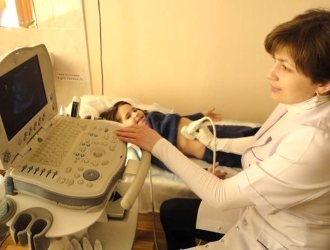
- fecal lipid profile;
- biochemical and general blood test;
- ESR analysis;
- Kaprogram kala;
- Ultrasound of the abdominal cavity;
- plain radiography;
- Ultrasound of the pancreas;
- CT or MRI of the abdominal cavity.
Differential diagnosis should be carried out with intestinal obstruction, acute cholecystitis or appendicitis, as well as peptic ulcer. DP's symptoms resemble renal or biliary colic. These diseases must also be excluded. Diagnosis of pancreatitis in children is complicated by numerous factors. The wider the range of examination procedures, the higher the chance of an accurate diagnosis.
Treatment methods
Therapy for DP includes medications, conservative methods and surgery. If the diagnosis is confirmed, the child should be treated in a hospital under the supervision of doctors. The duration of hospitalization depends on the degree of damage to the digestive system. After discharge, parents are given recommendations, compliance with which will help prevent repeated attacks of the inflammatory process. Some alternative medicines are allowed to be used as an addition to primary therapy.
Conservative treatment
The goal of conservative treatment of DP is to provide the affected organ with functional rest, relieve symptoms of inflammation and eliminate the causes of its occurrence. During the therapy period, measures are taken to prevent chemical or mechanical effects on the digestive tract. On the first day, the child is recommended to take a “food break” (fasting for two to three days). It is allowed to drink alkaline mineral waters without gas. Nutrition begins on the third day with gentle foods and small portions.
Other conservative treatment measures:
- intravenous administration of glucose solutions and proteolytic enzyme blockers (Contrical);
- bed rest and complete rest of the body;
- fasting for 48 hours after hospitalization.
Drug treatment
Drug therapy for DP is carried out not only to relieve the symptoms of the disease, but also to improve the functional state of the digestive system. Drugs are selected individually. If there are complications, the treatment regimen is supplemented with antibiotics. In hospital settings, most medications are prescribed to children by injection.
You can take tablet medications only after restoring your diet.
Examples of drugs for the treatment of DP:
- antisecretory agents (Famotidine, Pirenzepine);
- antispasmodics and analgesics (Papaverine, No-shpa, Analgin, Baralgin);
- antihistamines;
- means for improving microcirculation (Pentoxifylline);
- pancreatic enzyme preparations (Pancreatin);
- antibiotics;
- protease inhibitors (Pentoxyl).
Surgery
Surgical intervention is used in the presence of serious complications of DP and the failure of other treatment methods. Surgeries may involve resection of part of the affected organ, drainage of an abscess in tissue, or removal of a necrotic area. Surgical procedures are radical measures and in the treatment of children they are used only if there is a threat to the life of the small patient.
Treatment methods for the disease in children
Treatment of pancreatitis in children is complex and has several goals:
- relief of pain and dyspepsia,
- achieving clinical and laboratory remission,
- normalization of enzymes.
For this purpose:
- drug therapy,
- surgical methods,
- non-drug treatment (diet, physiotherapeutic methods, physical therapy).
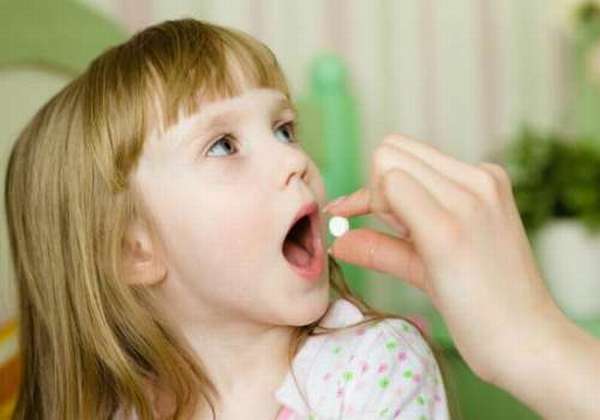
Treatment algorithm
Mild disease is carried out on an outpatient basis, moderate and severe - in a hospital setting. Based on many years of studying the disease in children, algorithms for the treatment of pancreatitis have been developed.
The beginning of treatment is cold, hunger and rest. This principle applies to all forms of pancreatitis.
Therapeutic effects on the inflammatory process in the pancreas include the use of several groups of drugs with different directions of action.
After the inflammation is relieved, maintenance therapy and long-term diet follow (in mild cases - a month, in severe cases - many years, sometimes throughout life). In the future, physiotherapy is involved and therapeutic exercises are prescribed.
Drug therapy
The therapeutic method of treatment, which was studied in detail and outlined in his works by Dr. med. S.V. Belmer, consists of the complex use of drugs from the following groups:
- painkillers,
- antispasmodics,
- enzyme (Creon, Pancreatin),
- antibiotic therapy for the development of complications or infectious nature of pancreatitis,
- synthetic analogues of growth hormone (somatostatin),
- antisecretory drugs (H2-histamine receptor blockers, PPIs - proton pump inhibitors, enveloping agents),
- prokinetics that increase the motility of the digestive organs,
- improving microcirculation (Trental, Pentoxifylline).
Initially, the drugs are administered parenterally, that is, as injections; later, the patient is transferred to oral administration of drugs in the form of tablets.
Surgical intervention
In exceptional cases, acute pancreatitis requires surgical intervention. The indication is a purulent-necrotic process in the gland, which can develop rapidly. In such cases, tissue destruction causes an abscess, and then peritonitis and sepsis. The operation is performed to open and remove ulcers, foci of necrosis, affected areas of neighboring organs, and sanitation of the abdominal cavity.
Traditional medicine
Alternative medicine prescriptions can only be used for children over four years of age. When selecting specific products, it is important to take into account the individual characteristics of the body (for example, the presence of food allergies).
Traditional methods can be used as a supplement, but not used as the main method of treating inflammation.
Examples of folk remedies:
- honey with herbs (50 g each of calamus and dandelion roots mixed with thyme, nettle root and hops (25 g each), it is recommended to grind the ingredients into powder, add 200 g of honey to the prepared mixture, take a teaspoon twice a day);
- corn silk, calendula and chamomile (combine the components in equal parts, pour boiling water over a teaspoon of the mixture, leave, after straining, take in small portions before each meal);
- dill seeds, chamomile and hawthorn berries (combine the ingredients in equal proportions, pour boiling water over a tablespoon of the preparation, leave in a thermos, take several times a day before meals).
Diet for pancreatitis in children
After pancreatitis, the child’s menu should be adjusted. It is recommended to steam meat and fish dishes. All ingredients are thoroughly crushed. Large pieces of food can harm the weakened digestive system of a small patient. Meals should be fractional (at least 5-6 times a day, in small portions).
Excluded from the diet:
- sausages;
- fatty meats or fish;
- chocolate;
- condensed milk;
- carbonated drinks;
- millet or pearl barley;
- sorrel;
- radish;
- nuts;
- peas;
- radish;
- sweet baked goods;
- marinades or pickles;
- chips;
- spicy dishes.
What can you eat?
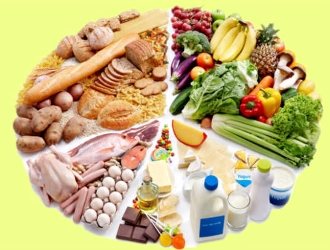
After the attack of pancreatitis has stopped, the child is allowed to resume feeding from approximately the fourth or fifth day of hospitalization. On the first day, pureed porridge can be introduced into the diet (millet is an exception). Then the menu can be diversified with vegetable puree and vegetarian soup. As for drinks, it is allowed to consume jelly and dried fruit compotes.
Gradually, the menu can include:
- baked apples;
- meatballs, meatballs or cutlets from lean meats;
- steamed vegetables;
- vegetable-based casseroles;
- protein omelet (steam);
- low-fat fish;
- dairy products.
Example menu
| Breakfast | Protein omelet, slice of wheat bread, tea |
| Lunch | Baked apple, herbal tea |
| Dinner | Vegetable soup, rice with chicken breast, juice |
| Afternoon snack | Banana, water |
| Dinner | Pasta with lean fish, green salad, juice |
| Before bedtime | Low-fat yogurt or herbal tea |
Treatment
The symptoms of inflammation of the pancreas in a child are eliminated in almost the same way as in the case of acute pancreatitis in an adult.
That is, this:
- Complete fasting, prescribed for 24 hours after the last attack, then a gentle diet;
- The use of various antispasmodic, anti-inflammatory, and anthelmintic drugs;
- Replacement therapy with enzyme agents, hormonal agents, as well as the use of anticholinergics and duspatalin.
All these methods are designed to relieve pain and relieve inflammation of the pancreas in a child, however, in especially severe cases, the method of drip intravenous administration of drugs is sometimes adopted.
Acute form
An acute form of pancreatic disease (pancreatitis) in children is quite rare, but still occurs sometimes. In this case, immediate placement of the child in a hospital is necessary.

Treatment of this form of pancreatitis involves absolute fasting for the first three days and complete physical and psychological rest. You can only drink degassed mineral water (Borjomi or Essentuki 4) warm. Fluid intake should be taken in small sips and small single doses. Such a diet will help you cope with the feeling of hunger and reduce pain to nothing. Already from 3-4 days, you can gradually introduce grated buckwheat porridge, steamed omelet and unsweetened warm tea into your diet. It is worth remembering that acute pancreatitis requires a gentle temperature regime (all food should be slightly warm).
On days 5-6, you can give non-acidic pureed cottage cheese, milk jelly and dry white bread. After another day, it is recommended to expand the menu with vegetable purees and pureed vegetarian soups.
A little later, you can switch to eating lean boiled meat, prepared in the form of puree.
On about day 14 of the diet, it is recommended to try giving baked apples and fruit jelly. Fresh vegetables and fruits can be introduced into the menu very carefully, carefully monitoring the child’s condition.
Along with diet, treatment of acute pancreatitis in children requires taking medications to relieve bacterial infection and pain.
In this case, the attending physician will prescribe the following:
- Antispasmodics and analgesics - no-spa, platifillin, analgin, etc.;
- Disinfectant therapy - intravenous administration of plasma, 5-10% glucose solution;
- In cases of severe disease, treatment may also include taking corticosteroid medications.
Acute pancreatitis in children requires adherence to a strict individual diet for 10-15 days. After which you can gradually expand the menu of the little patient.
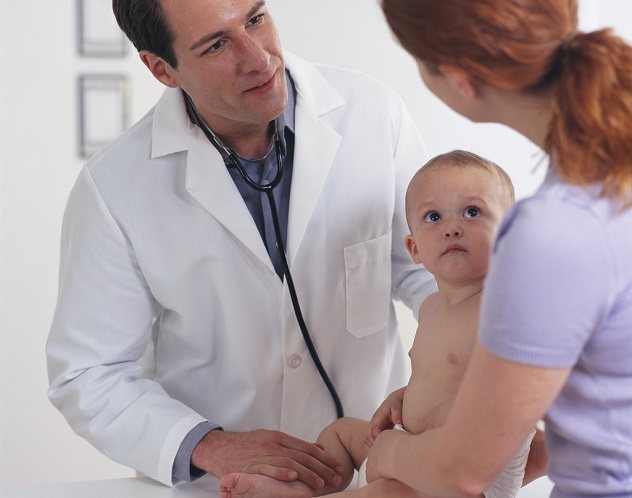
Chronic form
The sluggish chronic form of pancreatitis in children requires an integrated approach and includes the following treatment:
- The period of diagnosis and rehabilitation therapy in the hospital;
- Follow up with your attending physician;
- Completion of a course of health therapy in sanatoriums of the appropriate profile.
So, treatment of chronic pancreatitis in children in a hospital occurs according to the following scheme:
- To maintain a calm emotional background, sedatives are prescribed (valerian, bromine, etc.);
- If nagging pain occurs, chronic pancreatitis will be treated with antispasmodics and analgesics;
- However, the main treatment for the chronic form of the disease is diet.
So, in the first two days after hospitalization, it is recommended to spend a period of fasting using only degassed mineral water (Borjomi, Essentuki 4). On the third day, you can introduce weak unsweetened tea and white crackers, ground cereal mucous soup, and rosehip decoction into the diet.
Treatment of reactive pancreatitis
The type of disease that accompanies such a reaction of the body as inflammation of the pancreas in a child, called reactive pancreatitis, is usually provoked by the occurrence of many other processes. For example, ARVI, flu or sore throat. In addition, the disease sometimes begins to be active due to heavy consumption of food, which causes increased irritation to the digestive system.
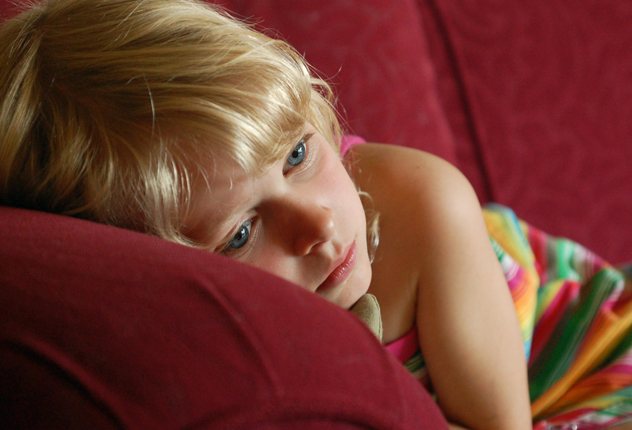
Treatment must necessarily take place in a hospital, where qualified doctors can monitor the child. They also prescribe a diet, as well as its duration, designed to help with reactive pancreatitis.
In addition, attending physicians provide therapy with special drugs that:
- Inhibits the activity of the pancreas;
- They contain enzymes that reduce pain;
- Relieves cramps.
Medicines
A child with an inflamed pancreas should be under constant supervision of the attending physician, and also take medications prescribed by him.
Typically, a small patient is prescribed the following group of medications:
- Preparations containing the hormone somatostatin, which soothes the irritated pancreas during recovery. These include the drug Octreotide.
- Medicines from the anticholinergic group, designed to reduce the secretion of gastric juice. This drug is Pirenzepine.
- Pancreatic enzyme preparations. These include Pancreatin, Festal, Mezim and others.
- Duspatin, which reduces spasm (one of the main causes of pain).
- Various antibiotics, corticosteroids and others.
Prevention
Prevention of childhood pancreatitis includes basic rules. It is important to follow the diet (the menu must correspond to the age of the child). If a small patient is diagnosed with diseases of the digestive system, then they must be treated fully and in a timely manner. Uncontrolled use of medications and self-medication should not be allowed. Additionally, excessive physical and emotional stress should be avoided. A disturbance in the psychoemotional state can cause a number of digestive pathologies.
Video on the topic: Pancreatitis - effective treatment + diet. Treatment of the pancreas without drugs or with drugs.
Treatment prognosis
With a mild form of pancreatitis and timely treatment, the prognosis for children is favorable. Pathology can be eliminated forever if it is diagnosed in time and appropriate treatment measures are taken. Purulent inflammatory processes or complications can cause the death of a child.
Ignoring the disease can cause serious damage to the digestive tract.
Possible complications:
- false cyst;
- pleurisy;
- peritonitis;
- phlegmon;
- abscess;
- diabetes.
